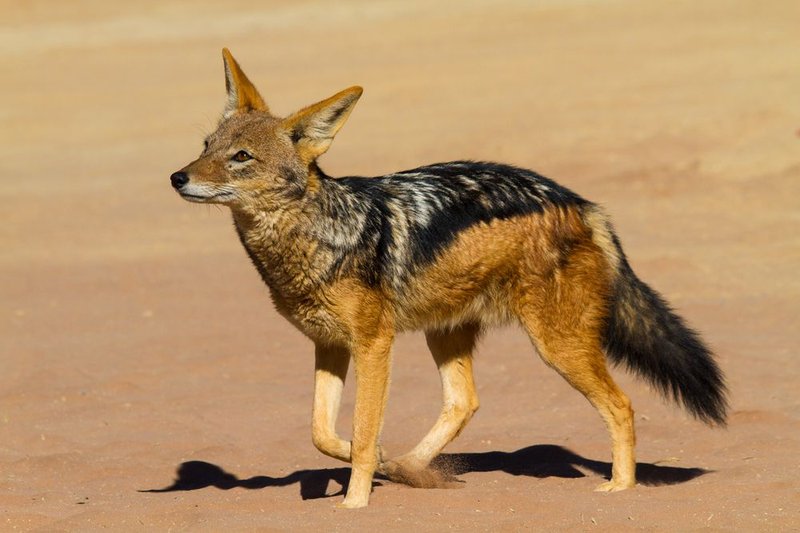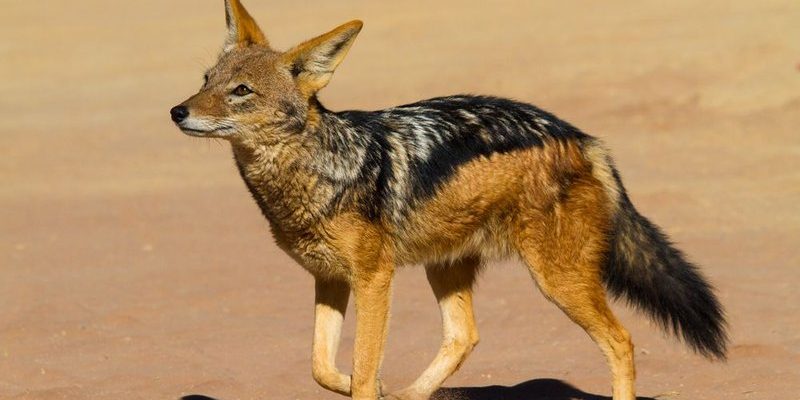
Jackals belong to the canid family, which also includes dogs, wolves, and foxes. They are known for their intelligence and adaptability, traits that enable them to thrive in various habitats, from savannas to deserts. While you might spot jackals scavenging for food or hunting small animals, their role goes far beyond just finding a meal. Instead, they are integral to the wellbeing of their ecosystems. So, let’s explore more about these remarkable creatures and understand their multifaceted role.
Key Characteristics of Jackals
Before we delve into the role jackals play in their ecosystems, let’s take a moment to understand what makes them unique. Jackals are medium-sized canines that vary in color, typically ranging from yellow to brown and often feature a bushy tail. They possess sharp senses, especially hearing and smell, which are crucial for hunting and scavenging.
Jackals are social animals and often form small packs, usually comprising a monogamous pair and their offspring. This social structure allows them to work together when hunting and caring for young. Here’s a fun fact: jackals communicate using a variety of vocalizations like howls, yips, and barks. This helps them coordinate during hunts or warn each other of potential dangers.
Their diet is particularly interesting. Jackals are omnivorous, meaning they eat a mix of plants and animals. They often scavenge on carcasses left by larger predators, but they also hunt small mammals, birds, and reptiles. This adaptability in diet not only helps them survive but also makes them vital contributors to the health of their environments.
The Jackal As A Scavenger
One of the primary roles of jackals in their ecosystems is as scavengers. Imagine walking through a forest and noticing all the fallen leaves and branches. Without those little creatures that break down organic matter, the forest would quickly become cluttered. Similarly, jackals play a critical part in cleaning up the landscape.
By scavenging on dead animals, jackals help control disease spread. Decomposing carcasses can attract pests and lead to outbreaks of illness among other wildlife. Jackals consume carcasses quickly, reducing the risk of disease. In this way, they act as nature’s cleanup crew, promoting a healthier environment for other species.
In addition to scavenging, jackals also help redistribute nutrients back into the ecosystem. When they consume prey, they excrete waste that fertilizes the soil. This process creates a healthier habitat, supporting plant life, which, in turn, sustains herbivores and other wildlife. It’s incredible how interconnected this cycle of life can be!
Predator and Prey Dynamics
Jackals are not just scavengers; they are also active hunters. When food is scarce or when they need to feed their young, they rely on their excellent hunting skills. This role makes them important players in the predator-prey relationship. You might be wondering how this works. Well, let’s break it down.
When jackals hunt, they target smaller animals like rodents, birds, and even baby antelopes. By doing this, they help maintain the population balance among these species. If jackals were to disappear, you might see an explosion of smaller animals, which could lead to overgrazing and depletion of vegetation. This would ultimately harm other animals and disrupt the entire ecosystem.
Moreover, jackals are often prey for larger carnivores like lions and leopards. This creates a natural balance where different species regulate each other’s populations. The presence of jackals ensures that various species can coexist, each one playing its part in the intricate web of life.
Role in Seed Dispersal and Plant Growth
You might think jackals are all about hunting and scavenging, but they contribute to plant life in surprising ways. When jackals eat fruits and seeds, they often travel considerable distances before excreting the seeds in new locations. This is known as seed dispersal, and it’s crucial for plant reproduction.
Imagine planting seeds in a garden. You need to spread them out to grow a diverse range of plants. Similarly, when jackals help distribute seeds, they support the growth of various plant species. This variety in plant life is essential since it provides food and habitat for numerous other animals.
Moreover, this growth contributes to the overall health of ecosystems. More plants mean better soil stability, improved air quality, and enhanced habitat for wildlife. So, in a way, jackals aren’t just surviving—they’re also nurturing their environment and fostering life all around them.
Jackals and Human Interactions
Jackals have been part of human folklore and culture for ages. However, as urban areas expand, these clever canines often find themselves in conflict with humans. Some people see jackals as pests, especially when they hunt livestock. This leads to negative perceptions, which can threaten their populations.
Yet, here’s the thing: Understanding the ecological role of jackals is crucial. They help maintain the balance in their habitats, and when we recognize this, we can find ways to coexist. Implementing protections and creating awareness about their role can help reduce human-wildlife conflict.
Additionally, jackals can serve as indicators of environmental health. Their presence in an ecosystem often means that the habitat is thriving. If their numbers decline, it could be a red flag to us about the state of the environment. By respecting jackals and their role, we contribute to a healthier planet.
Conservation Efforts
With threats like habitat loss and poaching, jackal populations are at risk. Conservation efforts are essential to ensure these remarkable animals continue to thrive. Many organizations work towards protecting natural habitats, implementing wildlife corridors, and promoting peaceful coexistence between jackals and humans.
Education is also a big part of conservation. Informing local communities about the benefits of jackals can change perceptions. For instance, demonstrating how they help control rodent populations or clean up carrion can showcase their importance. When people understand the value of these animals, they may be more inclined to protect them.
In addition, promoting biodiversity can indirectly help jackals. A healthy ecosystem supports various species, including jackals, allowing them to flourish. As individuals, we can contribute by supporting conservation organizations, volunteering in local wildlife projects, and being responsible in our interactions with nature.
Jackals often fly under the radar in discussions about wildlife conservation, but they play a vital role in their ecosystems. From scavenging and hunting to seed dispersal and disease control, these canines contribute significantly to the balance of nature.
Understanding their importance can help us appreciate the interconnectedness of life and the impact we have on the environment. So, the next time you think of wildlife, remember the jackal. By respecting and protecting them, we’re not just preserving a species; we’re enhancing the entire ecosystem. Let’s champion the cause of these unsung heroes in the wild—because every creature has a role to play in the grand story of life.

